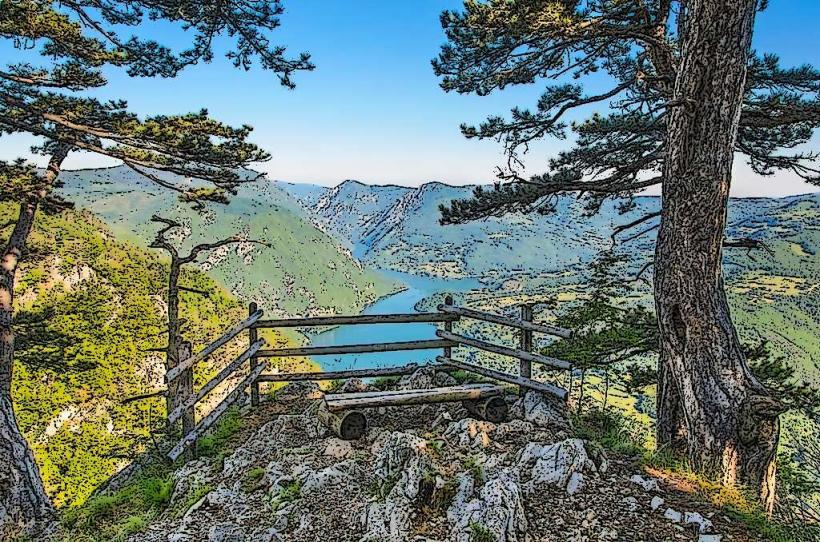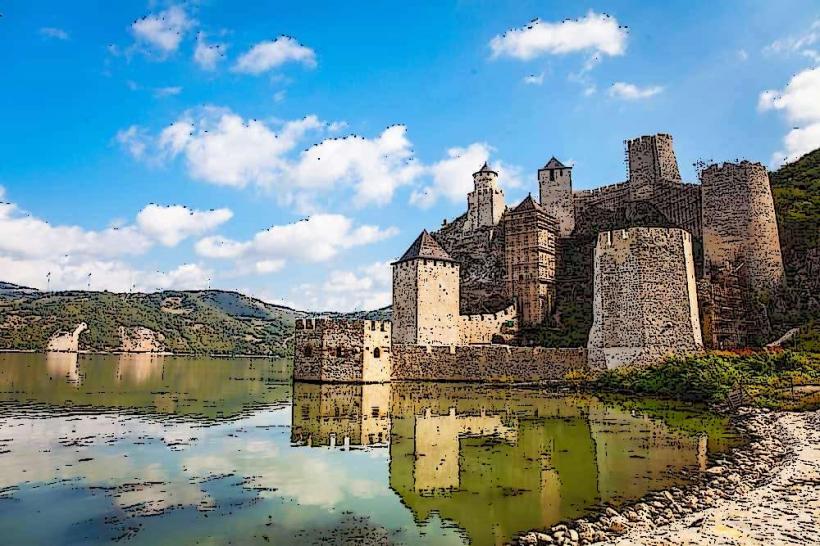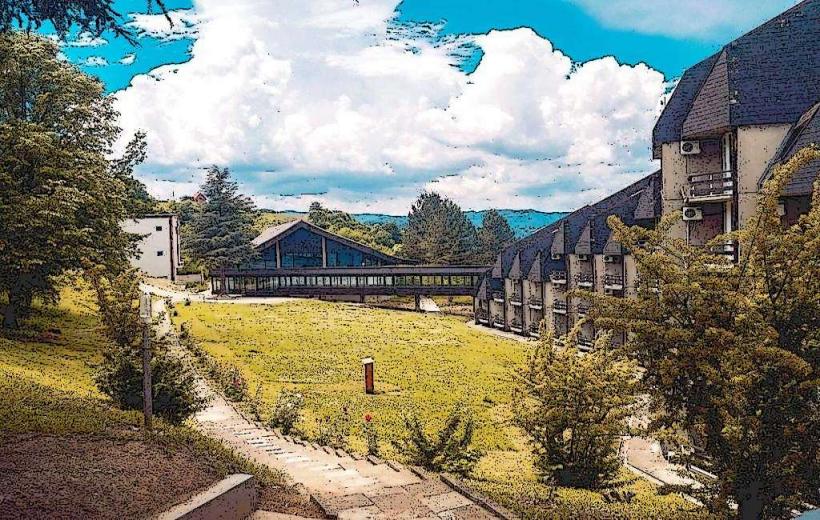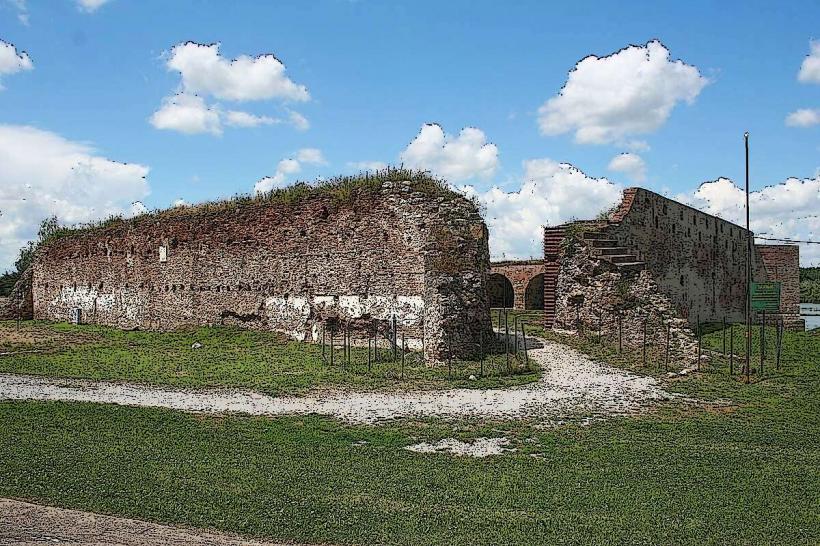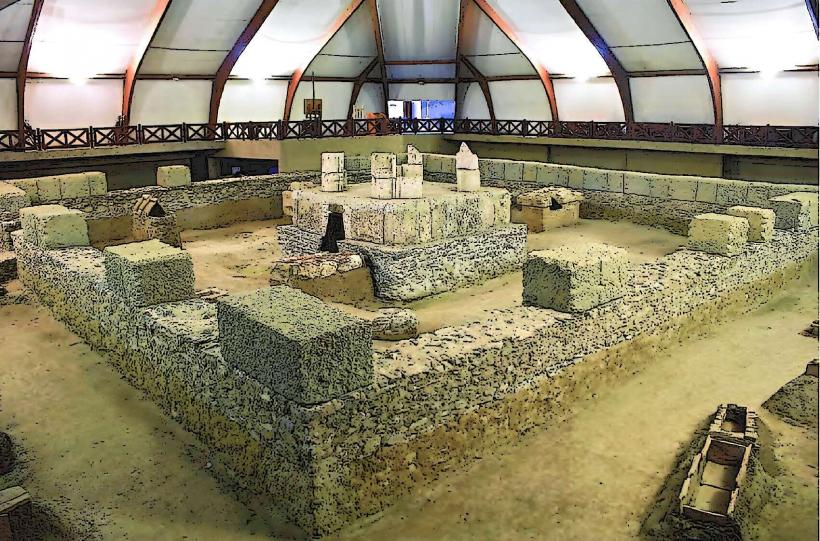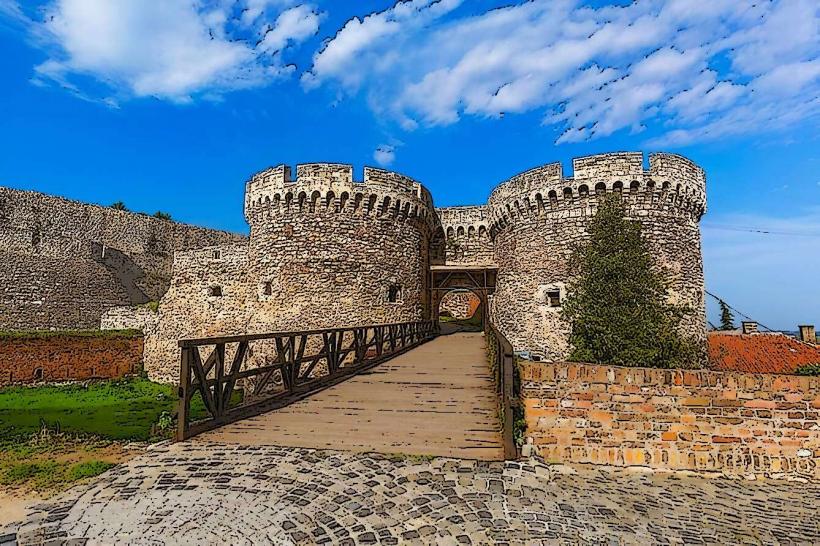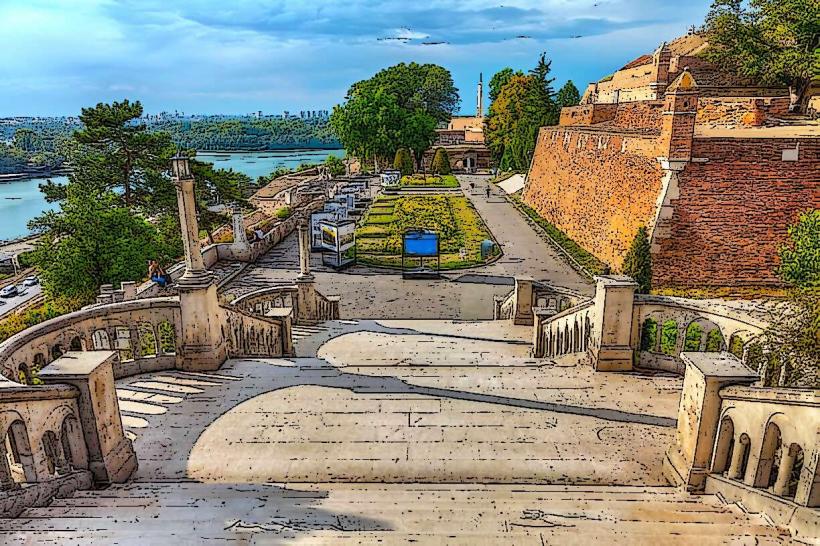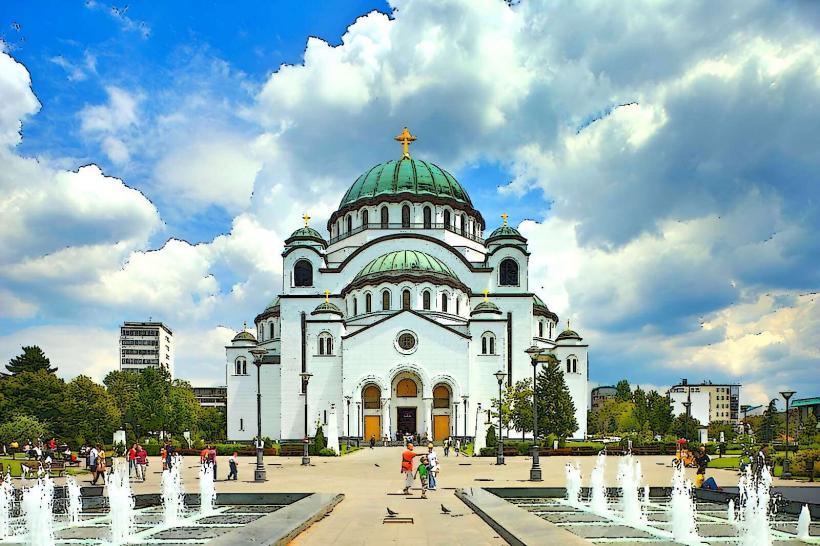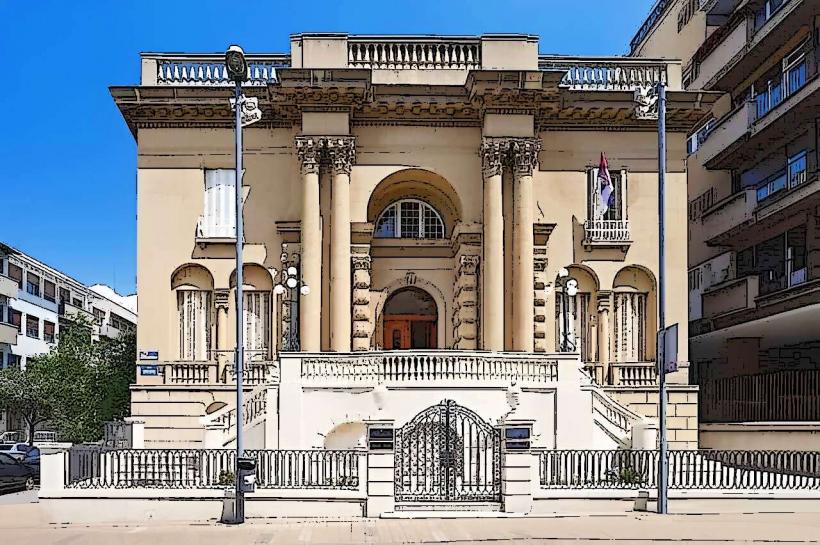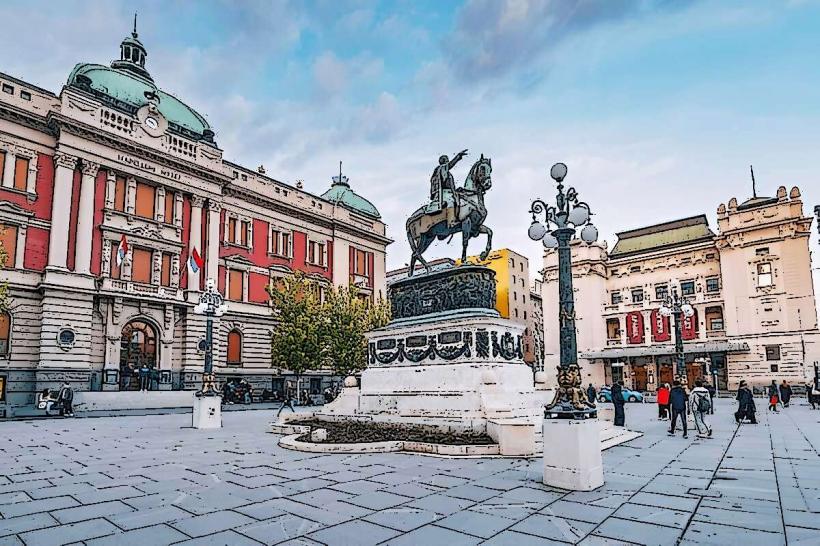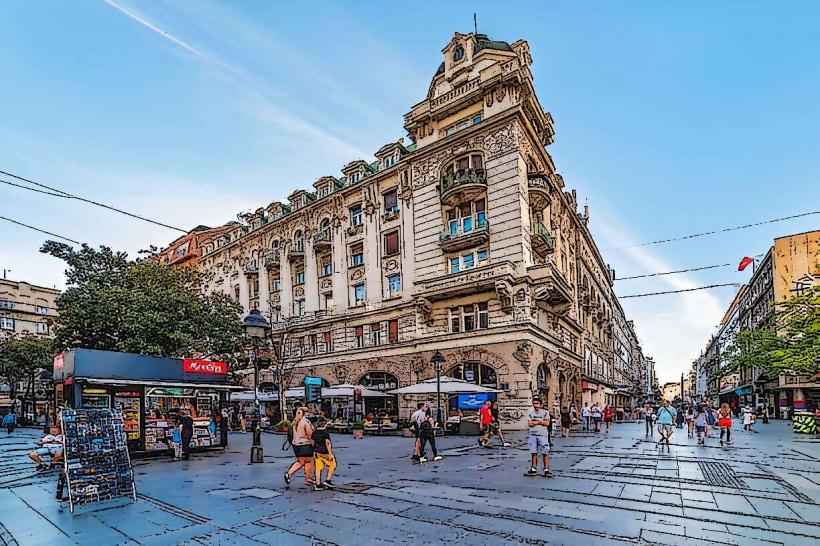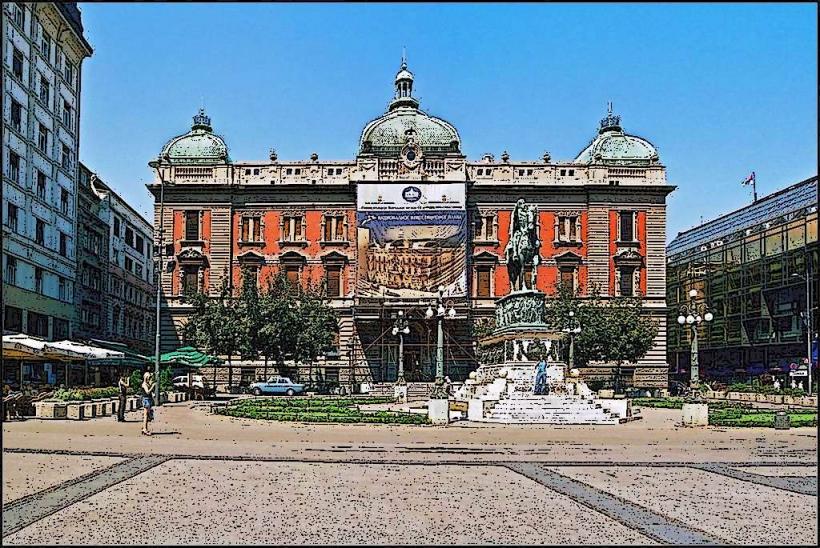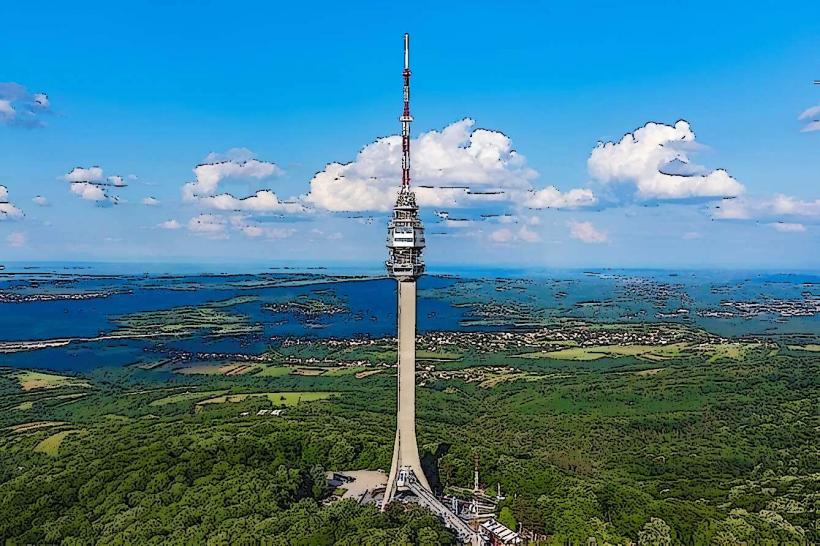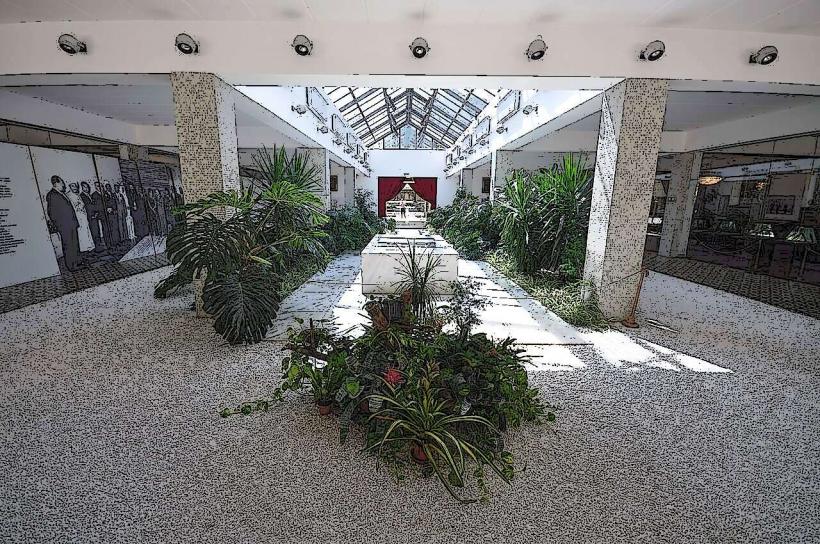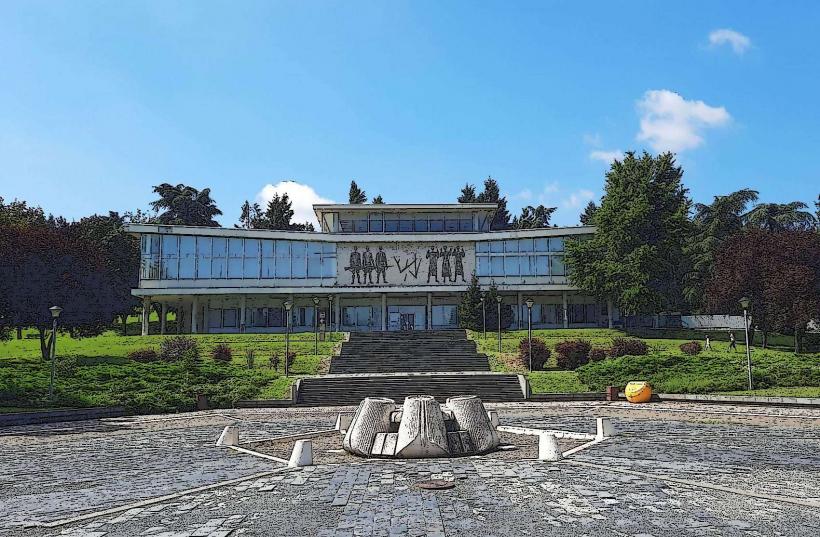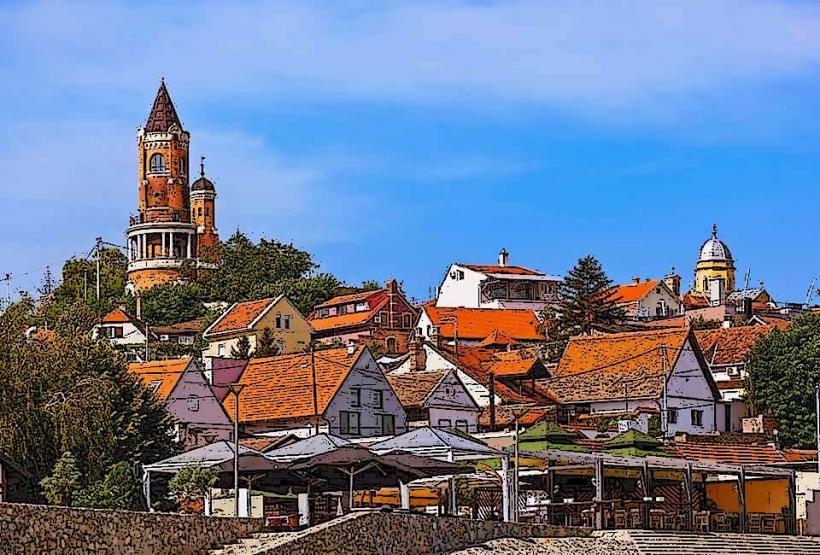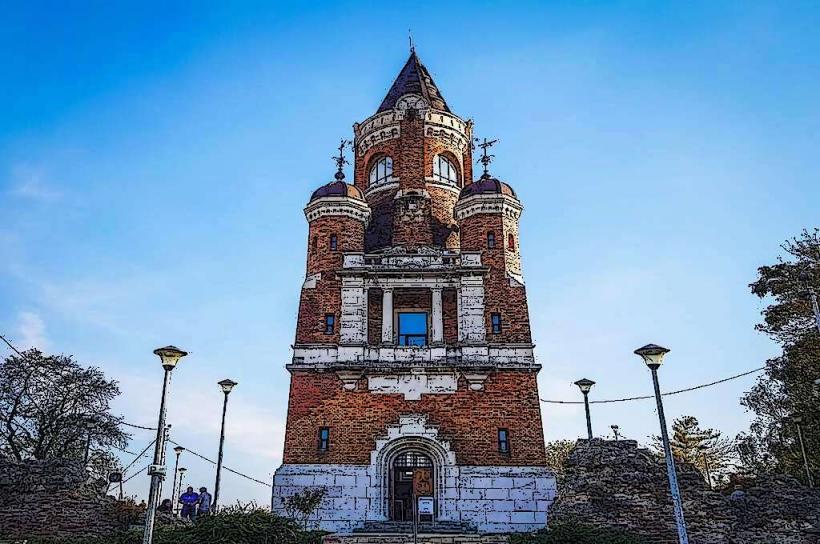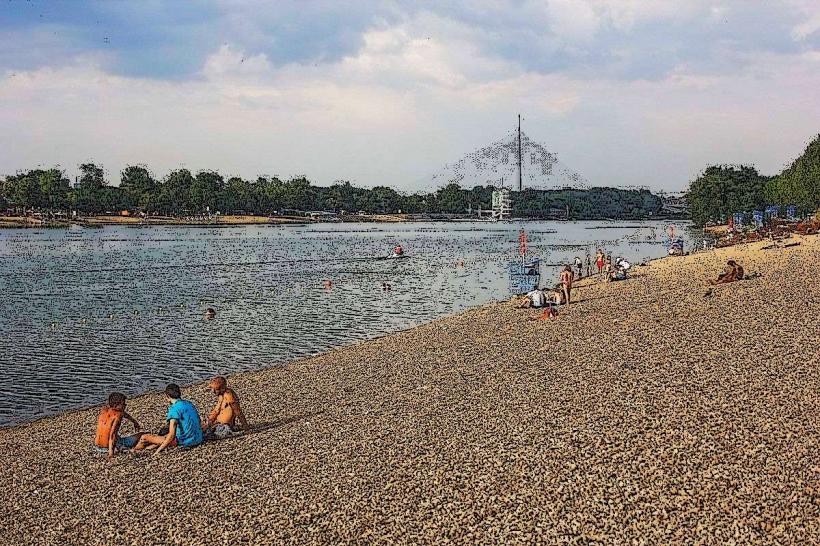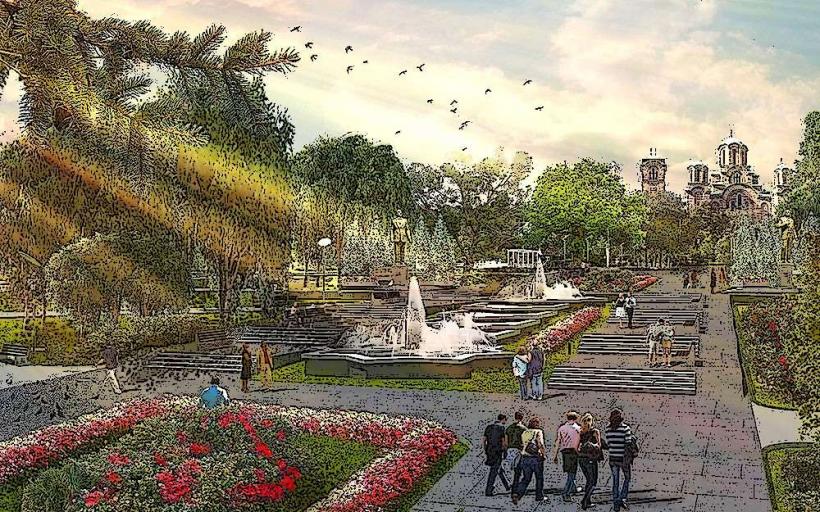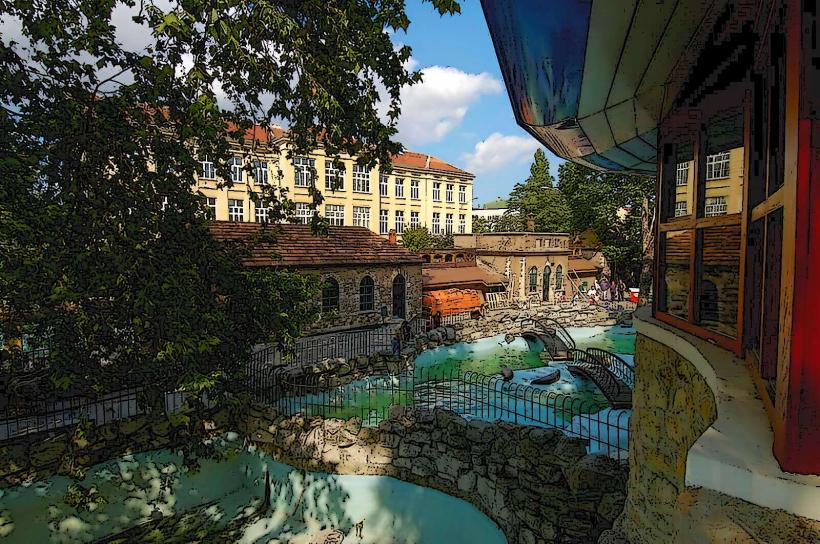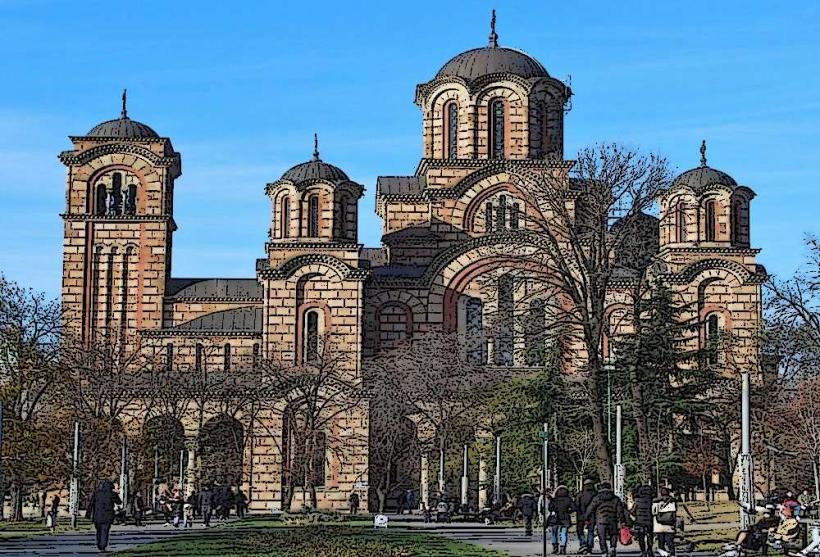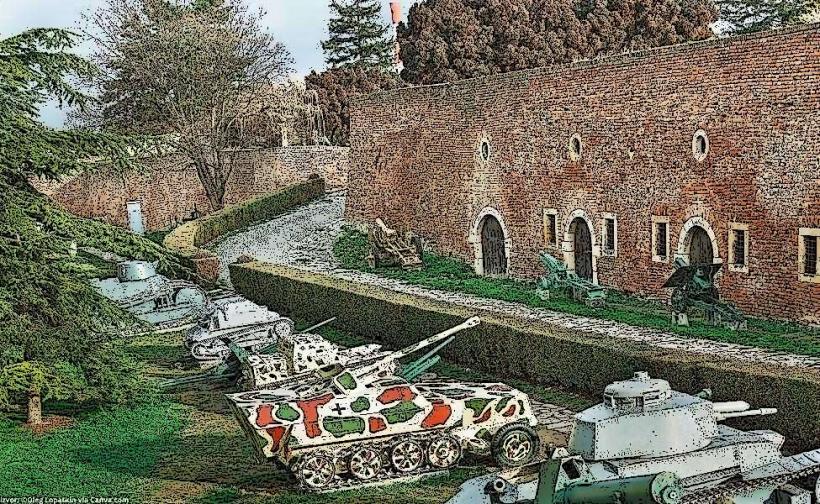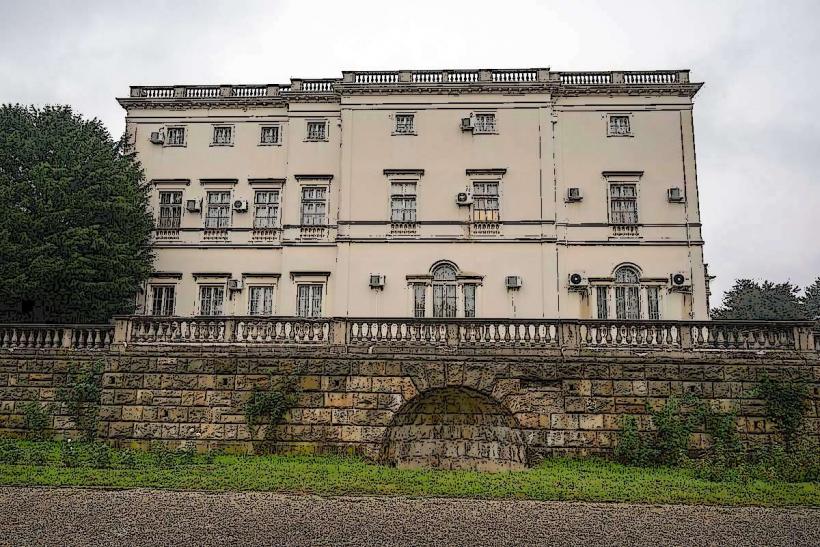Information
Landmark: Iron Gates Gorge (Donji Milanovac)City: Belgrade
Country: Serbia
Continent: Europe
The Iron Gates Gorge (Đerdap Gorge) is one of the most breathtaking natural wonders in the Balkans, located along the Danube River in eastern Serbia, near the town of Donji Milanovac. This dramatic and scenic river gorge stretches for about 134 kilometers (83 miles) along the Danube, marking the border between Serbia and Romania. The gorge is not only a geographical marvel but also a place of rich archaeological and cultural significance. Here’s an in-depth look at the Iron Gates Gorge and its many facets:
Geography and Natural Beauty
Formation:
- The Iron Gates Gorge was formed by the Danube River as it cut through the Carpathian Mountains, creating a spectacular landscape of steep cliffs, rocky outcrops, and narrow passages.
- The name "Iron Gates" comes from the "gates" formed by the gorge’s narrow passage, which is the gateway to the Danube River's journey through the Balkans.
Biodiversity:
- The gorge is home to a wide variety of flora and fauna, making it a protected area within Đerdap National Park.
- It is an important habitat for numerous bird species, including white-tailed eagles and black storks, as well as plants that thrive in the unique environment of the gorge.
- The Đerdap National Park is also a biosphere reserve and a haven for hiking, birdwatching, and nature photography.
Panoramic Views:
- The cliffs and peaks along the gorge provide stunning viewpoints overlooking the Danube. Visitors can enjoy expansive vistas, particularly from the Veliki Štrbac viewpoint, which offers one of the best panoramas in the region.
Cultural and Historical Significance
Archaeological Heritage:
- The Iron Gates Gorge region has been inhabited since prehistoric times, with several important archaeological sites, including Lepenski Vir, Vatin, and Čačavica, which provide insights into early human civilizations.
- The Lepenski Vir site, in particular, is one of Europe’s most significant Mesolithic settlements, dating back to 7000 BCE. It offers evidence of some of the earliest examples of organized settlements, monumental sculptures, and rituals.
Roman Legacy:
- The region was a key area in the Roman Empire. Trajan’s Bridge, the longest bridge of its time, once spanned the gorge, connecting the Roman provinces of Moesia Inferior and Dacia.
- The famous Trajan’s Tablet, located on the Serbian side of the gorge, commemorates the building of the bridge and the Roman Emperor Trajan’s conquest of Dacia (modern-day Romania).
Historical Significance:
- The Iron Gates was a strategic location for controlling trade and military movements along the Danube, and it served as an important passageway for various civilizations, including the Roman, Ottoman, and Habsburg empires.
Đerdap Dam and Hydro Power Plant
Construction and Importance:
- The Đerdap Dam (also known as the Iron Gates Dam) is located at the eastern end of the gorge, forming a large reservoir on the Danube River. It is one of the largest hydroelectric power plants in Europe, providing electricity to both Serbia and Romania.
- The dam was completed in 1972 and played a crucial role in controlling the Danube’s flow, preventing flooding and enabling navigation along the river.
- The dam’s construction led to the relocation of several settlements and the flooding of parts of the Iron Gates Gorge, but it also provided an opportunity for extensive archaeological excavations, uncovering the rich history of the region.
Navigation:
- The dam and the reservoir it created also improved river navigation, making it possible for large ships to travel the Danube more easily.
Tourism and Activities
River Cruises:
- The Danube River is the heart of the Iron Gates Gorge, and boat cruises are one of the best ways to experience its beauty. Many cruises operate between Donji Milanovac and the Danube Delta, providing a unique perspective of the gorge’s cliffs, islands, and historical sites.
- On these cruises, visitors can also see important landmarks, including Trajan’s Tablet, Golubac Fortress, and the Devil’s Town rock formations.
Hiking and Nature Exploration:
- The region is known for its excellent hiking trails that wind through the national park and provide access to its diverse flora and fauna. Popular routes include hikes to Veliki Štrbac and Little Štrbac, which offer sweeping views of the Danube and the surrounding landscapes.
- The area is a favorite for birdwatching, particularly for those interested in spotting rare species like the white-tailed eagle.
Visiting Historical Sites:
- Trajan’s Tablet: This ancient monument is one of the key historical attractions in the Iron Gates Gorge, commemorating Emperor Trajan’s conquest of Dacia and the construction of Trajan’s Bridge. It can be reached by boat or from the shores of the Danube.
- Golubac Fortress: Located near the mouth of the Iron Gates, this medieval fortress offers spectacular views and serves as a reminder of the region's strategic importance during the medieval period.
Đerdap National Park:
- The park offers a wide range of activities, including hiking, cycling, and wildlife watching. It is also a fantastic spot for photography, with its rich natural scenery and unique geological formations.
- Visitors can also explore local caves, such as the Rajkova Cave, which is one of the largest and most beautiful caves in the region.
Best Time to Visit
Spring and Summer (April to September):
- This is the best time to visit for outdoor activities like hiking, river cruises, and nature exploration, as the weather is warm and pleasant.
- The park’s flora is lush and green, and birdwatching is at its peak.
Autumn (October):
- The fall foliage along the Danube adds to the natural beauty of the gorge, creating a vibrant and colorful landscape.
Winter (November to March):
- While winter offers a quieter atmosphere and a chance to see the region covered in snow, some outdoor activities may be limited due to colder temperatures.
Interesting Facts
UNESCO Nomination:
- The Đerdap Gorge and its archaeological sites are part of Serbia’s nomination for a UNESCO World Heritage Site, highlighting its significance as both a natural and cultural landmark.
Ancient Trade Route:
- The Iron Gates Gorge has served as a key trade route between Central Europe and the Balkans for millennia. The Danube itself has been a central feature of European trade, and the gorge has witnessed countless movements of people, goods, and armies.
Environmental Protection:
- The Đerdap National Park is a biosphere reserve, playing a crucial role in protecting local biodiversity, including the Danube sturgeon, which is critically endangered.
How to Get There
Location:
- The Iron Gates Gorge is located on the Danube River, between Serbia and Romania. The town of Donji Milanovac is the main access point in Serbia.
Transportation:
- By car: The gorge is accessible from Belgrade (about 200 km), or from the Romanian side via the town of Orșova.
- By bus: Regular buses from Belgrade and other towns in Serbia travel to Donji Milanovac.
- By boat: River cruises along the Danube often pass through the gorge and stop at key landmarks.
Why Visit the Iron Gates Gorge?
The Iron Gates Gorge is a truly magical destination that offers a mix of natural beauty, historical richness, and cultural significance. Whether you’re interested in outdoor adventures, ancient history, or simply relaxing by the river, this incredible region has something for everyone. Its striking landscapes, historical monuments, and unique biodiversity make it a must-see destination for anyone traveling through the Balkans.

